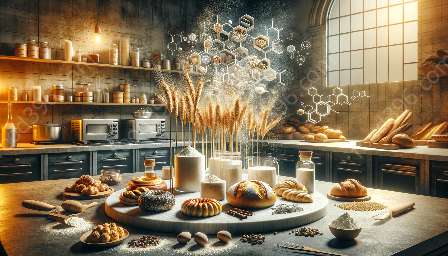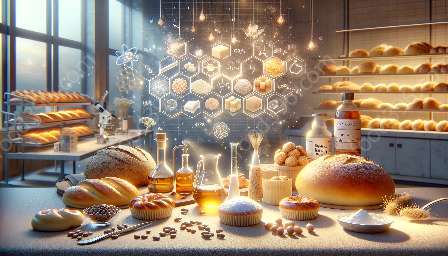The Science Behind Baking
Baking, an essential part of the food and drink industry, relies on the principles of chemistry and physics. It involves the transformation of raw ingredients into a finished product through the application of heat, leading to various chemical and physical changes.
Research in Baking Science
Baking science research encompasses a wide range of disciplines, including food chemistry, microbiology, and engineering. Scientists investigate the properties of ingredients, such as flour, sugar, and leavening agents, to understand their interactions during the baking process.
1. Ingredient Functionality
Researchers study how different ingredients perform in a baking environment, focusing on their functionality, such as leavening, moisture retention, and flavor enhancement. Understanding the functionality of each ingredient helps in optimizing recipes and developing innovative baking techniques.
2. Gluten Formation
The formation and behavior of gluten, a key protein in wheat flour, are major areas of investigation. Scientists delve into the molecular structure of gluten and its role in providing structure and texture to baked goods. This research is essential for creating gluten-free alternatives and improving the overall quality of baked products.
3. Microbial Interactions
Microbiologists explore the role of yeasts, bacteria, and other microorganisms in the fermentation and leavening processes. Understanding microbial interactions is crucial for developing new methods for dough fermentation and enhancing the nutritional qualities of baked goods.
Innovations in Baking Technology
Baking technology continues to evolve, driven by advancements in materials, equipment, and processing methods. These innovations are revolutionizing the way baked goods are produced, improving quality, efficiency, and sustainability.
1. Precision Baking Equipment
New baking equipment and ovens incorporate precision controls and advanced heat transfer technology to ensure consistent and uniform baking. This results in improved product quality and reduced energy consumption, contributing to sustainable baking practices.
2. Digitalization and Automation
The integration of digital technologies and automation systems streamlines the baking process, from ingredients handling to final product packaging. Automated mixing, proofing, and baking systems optimize production workflows and minimize human intervention, leading to higher efficiency and reduced labor costs.
3. Clean Label Ingredients
Bakers are increasingly embracing clean label ingredients, such as natural flavors, colors, and preservatives, in response to consumer demand for healthier and transparent food options. Research and innovation in this area focus on developing natural alternatives without compromising taste and shelf life.
The Future of Baking Science
As baking science and technology converge, the future holds exciting possibilities for the food and drink industry. Advancements in ingredient functionality, gluten-free baking, microbial control, and sustainable production processes will continue to drive innovation and shape the way we experience baked goods.
1. Personalized Nutrition
Emerging research aims to personalize the nutritional content of baked goods to meet individual dietary needs and preferences. This includes the development of functional ingredients and formulations tailored to specific health goals, such as reduced sugar, increased fiber, and enhanced protein content.
2. Circular Economy
Baking science is aligning with the principles of a circular economy by exploring ways to minimize waste and optimize resource utilization. Researchers are investigating novel approaches for utilizing by-products, such as spent grains from brewing, in the production of innovative baked goods, contributing to a more sustainable food system.
3. Smart Packaging and Preservation
Innovations in packaging technology aim to extend the shelf life of baked goods while maintaining product freshness and quality. Smart packaging solutions, including oxygen scavengers and freshness indicators, are being developed to reduce food waste and enhance consumer satisfaction.




















